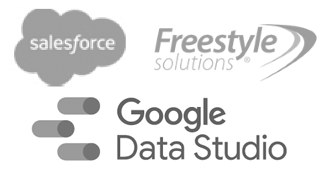RFM (recency, frequency, monetary value) identifies your best customers – and what else?
To finish our series on using RFM, we’ve excerpted Jean Gianfagna’s excellent discussion of how to use RFM to focus your businesses. See more of Jean’s keen marketing insights at her blog, Smart Marketing Strategy, at http://www.gianfagnamarketing.com/blog/.
Once the (RFM) analysis is complete, you have a measure of each customer’s profitability, so you can rank customers from most profitable to least. You can then divide this ranked list into ten equal customer groups (deciles).
The top two deciles (top 20%) are your best, most profitable customers, the ones who have bought from you most recently, who buy from you most often, and who purchase at the highest dollar amounts. Deciles 3-7 are your next best customers. Deciles 8-10 are your least valuable customers.
7 Ways to Use RFM for a Smart Marketing Strategy
Here are seven ways to use RFM to target your marketing campaigns more precisely and utilize your marketing resources more effectively:
- Understand your best customers. Once you’ve identified your best customers, you can create demographic profiles to gain insights into the characteristics they share. You also can append data to their records, such as company size or NAICS code (similar to SIC classification), for an even fuller picture.
- Find the low-hanging fruit among your next-best customers. Take a careful look at the customers in deciles 3-7 whose demographic profiles are similar to your best customers. This is likely to be your best upselling opportunity.
- Target the right prospects on rented mailing lists. Armed with information about the characteristics of your best customers, you can be extremely selective about the names you rent on commercial mailing lists, which can cut your costs and increase response.
- Reallocate sales support. RFM can help you reassess the level of sales support appropriate for each customer based on their value and potential. Your goal should be to deploy your most expensive sales resource – your sales team – on customers who already generate the most profit or have the highest potential to buy more.
- Develop tiered direct marketing campaigns. Focus high-end direct marketing campaigns on your highest-value customers and mail less expensive campaigns to lower-value customers. You might send best customers a personalized direct mail package with a product sample, for example, while others get a simple self-mailer offering a free product sample on request.
- Test a high-end marketing campaign to high potential customers. Once you’ve identified customers in deciles 3-7 with the same demographics as your best customers, test a more elaborate direct marketing campaign to these customers to try to increase their profitability.
- Decide which customers to drop from marketing. Customers in deciles 8-10 probably should be dropped from your mailing lists and marketing campaigns because of their low value. It may be costing you more to sell to them than they’re worth.
Why Marketing Strategists Can’t Live by RFM Alone
Knowing your best (and worst) customers can give you important insights for a smart marketing strategy. As a marketing consultant, I’ve used RFM analysis for several business-to-business marketing clients, including a large bank in Ohio and a major retail merchandising company near Cleveland.
But although RFM is a great tool, smart marketers know not to rely on RFM alone when developing a marketing plan. You also need to consider input from your sales team, feedback from your customers, and the results of prior marketing initiatives to decide how best to market to your current customers and targeted prospects.
 Professor’s Corner:
Professor’s Corner:
Using RFM to Segment Organizational Customers
InJoy Case Study
The challenge for B-B marketers is that most marketing applications are designed for the consumer environment. In 2007, InJoy Birth and Parenting, a leading source for family educational materials, approached DMSI about this problem.
InJoy wanted to take advantage of the RFM capabilities of WiseGuys. As in most B-B environments, InJoy wanted to capture the decision makers and influencers in their client base – principally large hospital chains – even though their database did not register them as “buyers”. And of course, if a contact name is not a buyer, they do not get selected for a typical RFM style mail selection.
Luckily, WiseGuys already had a Site RFM scheme in place. This RFM score evaluates the account as a whole and can show that what appear to be multiple small customers (or decision makers) are indeed parts of a large customer at the same location! This is especially useful for B-B marketers with high concentrations of individuals at a specific organizational site.
This met the needs of InJoy almost perfectly, but with one exception. InJoy wanted enterprise-wide visibility of their key accounts, and they wanted WiseGuys to share this information with their order management system (Multi-Channel Order Manager, aka MOM).
WiseGuys assigned a Platinum-Gold-Silver segmentation score for each customer account from the Site RFM calculations. By writing this score back to MOM, all sales, marketing, and order entry staff had visibility of customer segmentation. After 5 years, here is what InJoy has to say about this success story:
“We still use WiseGuys to create our customer segmentation code, which helps with sales and direct marketing efforts. In the last couple of years we have been able to save a significant amount of money in direct marketing, and our sales team can focus on calling the right customers. These initiatives alone justified the investment.”
– Carlos D., CEO, InJoy Birth & Parenting









